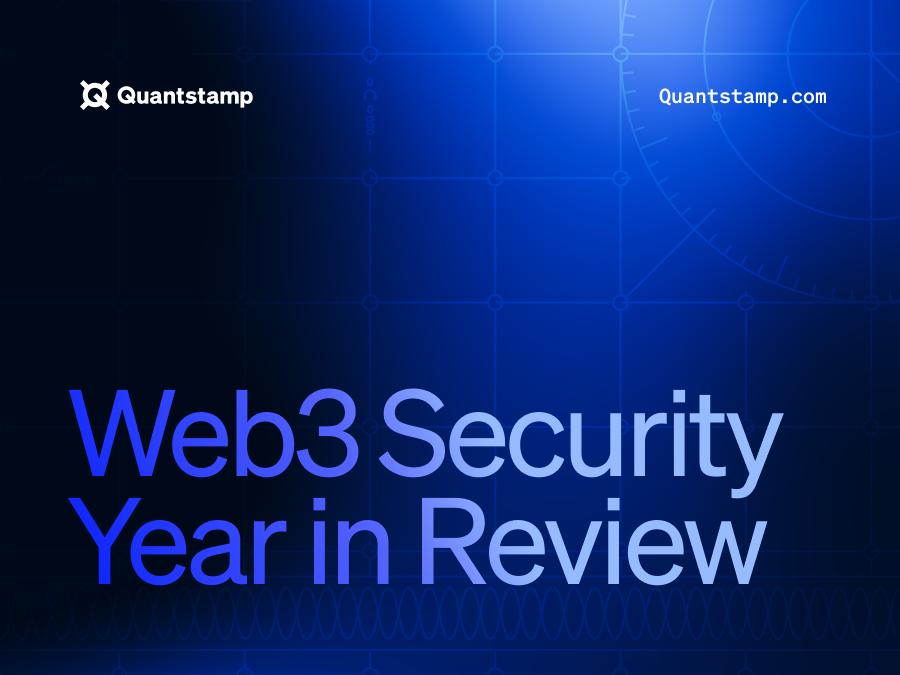DeFi has experienced significant growth over the past year, with total value locked (TVL) climbing 14x last year and more than doubling in the first quarter of 2021. This growth has come with a host of innovative protocols that are creating an open, permissionless financial system on the blockchain. As the sector grows, many applications are becoming increasingly sophisticated, bringing structured products like derivatives, indexes, and undercollateralized loans.
While DeFi’s benefits are too numerous to count, there has also been a recurring challenge: appropriately managing risk exposure. Until recently, DeFi interest rates were always variable. You could decide to invest your Dai into a protocol at 12% interest, only to see it drop to 4% the following week. While some DeFi users don’t mind the never-ending chase for yield, highly variable rates can be a turnoff for institutions or even individuals seeking stable returns.
Enter risk tranching and fixed yield products. At a high level, investors choose between different risk levels—each with its own tailored potential for upside and downside—when depositing their digital assets into a specific pool. Widely used in traditional finance, tranche lending products offer a pathway to bring fixed interest rates to decentralized debt. Essentially, it allows risk to be redistributed among a market of different investor profiles.
Senior Tranche
Lower risk, ideal for investors seeking predictable returns
Depositors are guaranteed to receive the fixed rate for the pool over a certain period of time.
Junior Tranche
Higher risk, ideal for speculators seeking levered returns
Depending on the actual rate of return, these “speculators” will pocket the difference after having paid out the guaranteed interest rate to the senior tranche.
Following the example above, if the overall yield was 25% and the senior tranche was promised a 5% fixed return, junior tranche depositors would then receive 20%. If the overall yield was only 8%, users in the junior tranche would only receive 3%. Of course, this assumes tranches are of equal size. Different tranche sizes introduce a degree of leverage with the potential to be favorable; for example, a relatively larger senior tranche would result in the junior tranche receiving returns higher than 20%.
With this method, investors can earn yield optimized by risk level, based on their tolerance for risk and their view of the market. The junior tranche is exposed to additional layers of risk in an effort to obtain the highest possible yield. While those in the senior tranche aren’t subject to the same risk as those in the junior tranche, they are also foregoing the upside should the return be significantly higher than the fixed rate they were guaranteed.
While different protocols may take different approaches, unleashing the potential for fixed rate loans and opportunities to mitigate risk is an exciting development for the DeFi space. Quantstamp is proud to help secure some of the most innovative protocols that are leading the charge in bringing fixed yield and risk tranching products to DeFi.

BarnBridge
BarnBridge is a protocol for addressing DeFi risks like yield fluctuations or asset price volatility with marketplace mechanisms.
The protocol’s SMART Yield application pools users’ collateral and deposits it into lending or yield-generating protocols. The yield is then bundled into various tranches and tokenized. In the junior tranche, investors have the opportunity to earn higher rates but also run the risk of having to subsidize the senior tranche depositors if interest rates fall below the fixed rates. Funded by investors like Synthetix founder Kain Warwick and Aave founder Stani Kulechov, BarnBridge currently supports stablecoin markets across Compound, AAVE, and C.R.E.A.M., as well as two farming opportunities to earn $BOND, the protocol’s native token.
Barnbridge’s SMART Alpha application, slated for Q3 2021, will enable users to hedge the volatility of their crypto assets. Junior tranches will supply senior tranches with buffers against downside price movements in exchange for levered upside exposure.
Ultimately, BarnBridge is bridging the gap by bringing traditional risk management tools and fixed income instruments to DeFi. By making rates more predictable, they’re making DeFi more inviting and appealing to a wider audience.

Saffron Finance
Saffron Finance is a decentralized protocol that acts as a yield optimizer for liquidity providers. Founded by an individual with the pseudonym "Psykeeper,” Saffron tokenizes on-chain assets, including contracts that would otherwise limit access to utilized capital. Ultimately, this gives liquidity providers greater flexibility and access to the underlying collateral while enabling leveraged staking and risk management.
Where extreme market volatility or economic attacks can be detrimental to DeFi investors, Saffron helps mitigate this risk through “dynamic exposure.” Using the protocol, investors can select customized risk and return profiles using Saffron pool tranches. Senior tranches (AA tranches) carry the least risk and lower returns. Junior tranches (A tranches) carry the most risk along with potentially higher returns. Then, there’s the ‘Mezzanine,’ a layer between these two tranches (the S tranche), sometimes called an equity tranche in traditional finance.
By acting as an intermediary between liquidity providers and lending protocols, Saffron is fulfilling the need for a decentralized way to exchange risk between users.

NAOS Finance
NAOS Finance is a marketplace for loans backed by offline income streams, facilitating an end-to-end lending process that brings together both DeFi lenders and institutional borrowers.
With NAOS, investors can deposit funds to earn guaranteed fixed interest over time, and borrowers can access fiat loans using real-world assets as collateral. The protocol is connecting the on-chain world with a variety of off-chain opportunities. For example, NAOS tokenizes debt obligations such as corporate loans, account receivables, and invoices. In the future, they plan to expand this list to assets like real estate, precious metals, equipment, and commodities. By tokenizing high-quality, real-world assets that are safe and secure, NAOS is making it easier for institutions, corporations, and everyday users to enter DeFi.

Pendle
(Formerly known as Benchmark)
Pendle enables the trading and hedging of yield on an AMM system. The protocol works a bit differently from risk tranching protocols and instead, offers interest rate swaps. Users deposit a yield-generating token such as aUSDT or cUSDT into Pendle to mint an Ownership Token (OT) and a Yield Token (YT). OT represents ownership of the underlying asset and YT represents the right to future yield. YT holders then have flexibility in how they choose to use it:
- Sell YT on Pendle’s AMM for cash upfront. The variable interest rate is swapped for a fixed one and yield is locked in.
- Deposit YT into Pendle’s AMM to provide liquidity. In return, the user will receive fees and incentives.
Users can also buy YT to gain direct exposure to yield, allowing them to speculate on interest rates in a capital-efficient manner.

88mph
88mph is a fixed interest rate lending protocol built on Ethereum. Rewards are offered in $MPH, a governance token that also provides revenue incentives, protocol fees, and yield farming rewards for stakers.
Fixed interest rate bonds (FIRB) represent capital deposited in the protocol that generates fixed rate interest over a certain time period. Users deposit stablecoins or various other assets such as RenBTC, yCRV, or UNI, and receive an ERC-721 NFT representing their fixed-interest rate bond. From here, this NFT can be transferred, sold, or used to mint a zero-coupon bond—discounted bonds that can be redeemed at a certain maturation date.
To offer this fixed rate, the protocol uses two main derisking mechanisms: pooling deposits together, and funding the system’s debt using floating-rate bonds.
Floating rate bonds (FRB) let investors fund the debt created by the FIRB investors. Ultimately, funding these floating-rate bonds lets users long the market rates of the underlying money market (Compound, Aave, or others) by taking on the debt of one or more FIRBs. For doing this, they get the yield generated by those FIRBs until maturity.
With 88mph, users can earn a stable return even when floating interest rates rise and fall quickly. With plans to add more derisking layers in the future, it will be interesting to see the protocol’s continued development in their self-described quest towards “risk-free” DeFi.
What’s Next
The protocols above are just the beginning—fixed income and risk tranching products have the potential to unlock a variety of innovative solutions. In the TradFi world, some of the largest financial products are fixed rate products: for example, the worldwide bond market ($119 trillion) or the interest rate swap market ($341 trillion). Considering this, having access to fixed rate borrowing and lending within DeFi could unlock a lot of new products and protocols.
Existing platforms expose DeFi investors to complex, code-driven outcomes, so appropriately managing risk on vault-type products will likely continue to be a common theme. And, perhaps the most appealing thing about these fixed income and risk tranching products are their potential as a new financial primitive. Following in the footsteps of these leading protocols, other teams can deliver new products that address all ranges of risk tolerance. Risk tranching can be used to mitigate other risks, beyond floating interest rates. Letting DeFi users hedge against risks like impermanent loss or flash loan attacks could be instrumental in driving further growth.
As a product, risk tranching is exciting because it demonstrates the power of composability in DeFi. However, this also comes with its own risks. As multiple protocols are integrated, the number of attack vectors also rises. Additionally, tranches are a structured product, meaning they inherently come with complexity that needs to be communicated properly to end users. Conveying these risks to DeFi users will be important in the success of these protocols.
While every new technology comes with its unique challenges, these risk-hedging protocols are certainly solving a pain point for many would-be DeFi investors. The volatility of cryptocurrencies can be a serious deterrent, so offering solutions with varying degrees of risk helps to make DeFi more appealing. Ultimately, these protocols will play a key role in helping DeFi evolve and mature, and clear the path for more players to enter the space.
.svg)
.svg)




.png)







.svg)

.svg)



